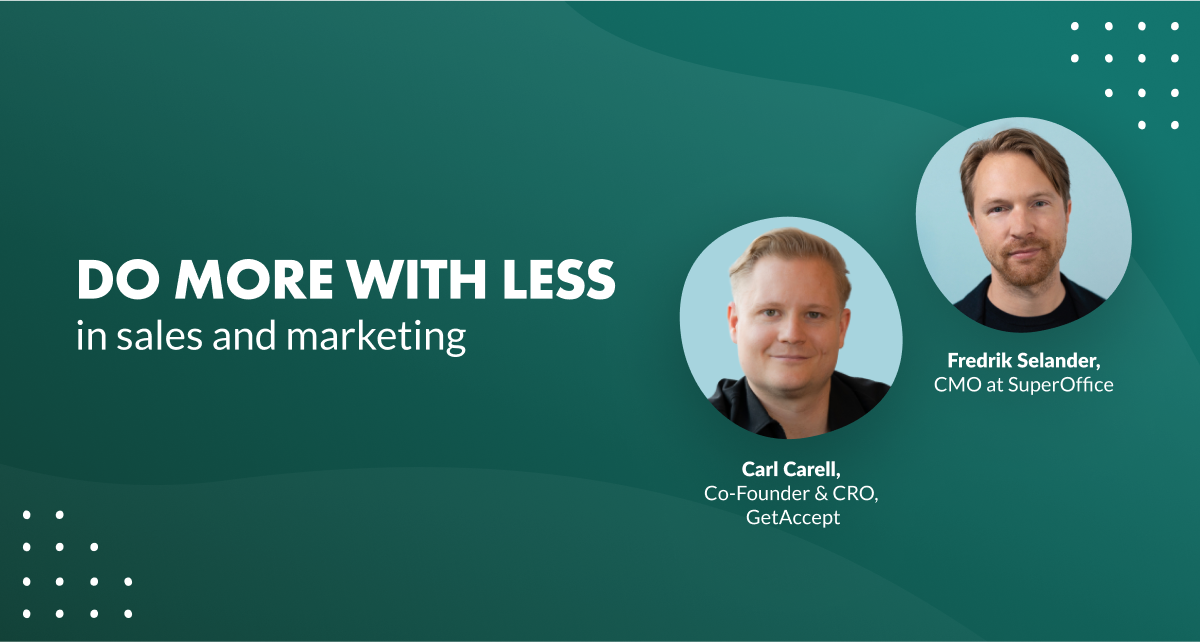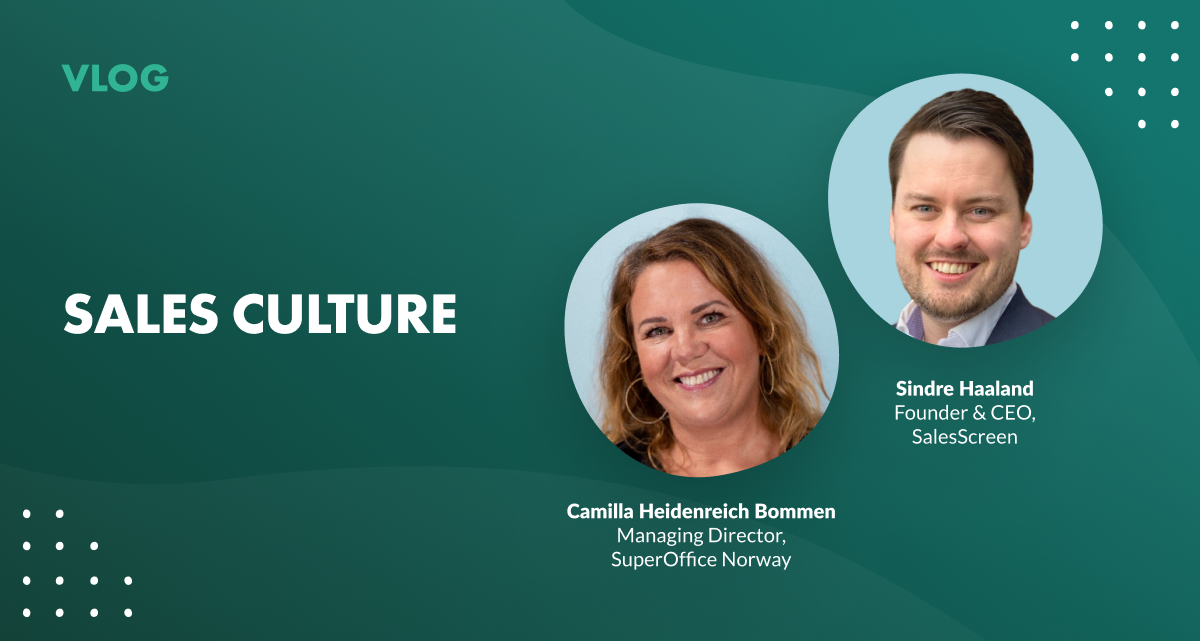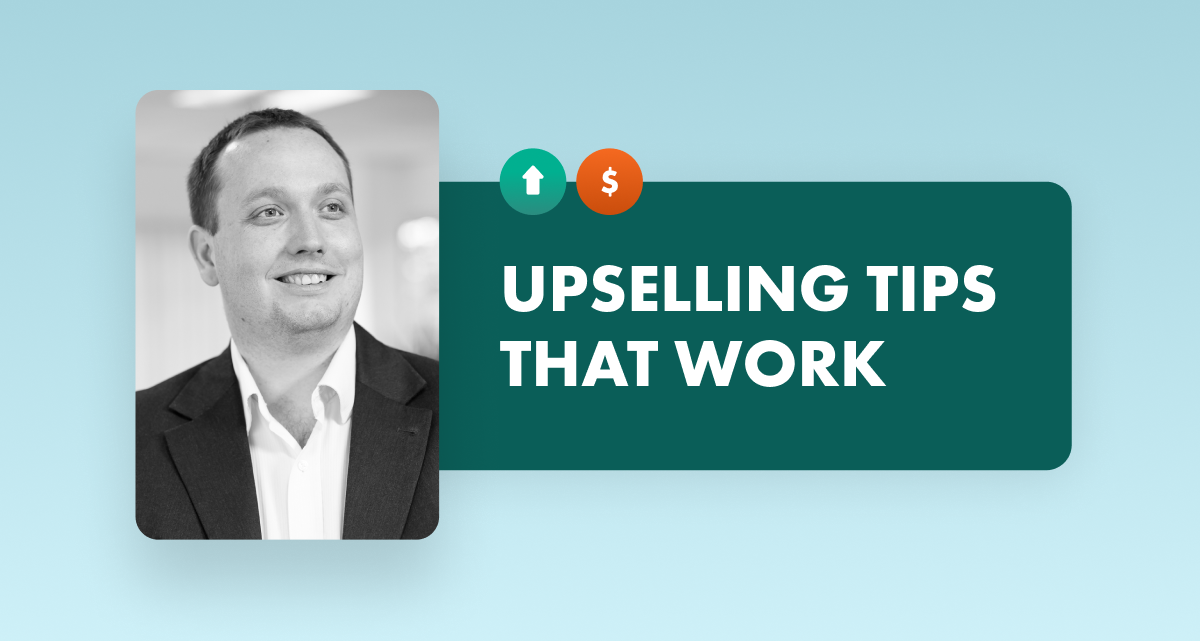We live in an increasingly uncertain economic climate today.
Energy crisis caused by the political turmoil in Europe, consequences of the Covid-19 pandemic, inflation, food and real estate prices going up – the times are tough for economies and businesses around the world.
That’s why a lot of business leaders today, especially those in charge of revenue growth, are forced to look for ways to achieve more with less resources.
To address this situation and share some tips on how to do more with less, Fredrik Selander, CMO at SuperOffice, invited Carl Carell, Co-Founder & CRO at GetAccept. They discussed the need to refocus and rethink how sales and marketing can achieve growth, the change in operational strategy and a stronger focus on ICP.
Let’s take a look at the key discussion points.
⏩ You can find the link to the video recording of the webinar at the end of this article.
Refocusing in the times of change
It’s not only our personal stance on the situation. It’s about how you evaluate your realistic possibilities in the entire revenue motion, thinks Carl Carell.
Talking on behalf of sales, Carl thinks that since today organizations are required to be more cash-efficient than before, we all need to rethink many things, such as our target market and its needs, our ICP, and the activities we prioritize. We also need to readjust our focus on efficiency and profitability.
Another point related to “sales refocusing” that Carl stresses: “When you're changing, don't think that the entire organization would automatically follow your new strategy and focus. You need to think how to re-educate your sales organization and build a sales enablement motion through coaching.”

According to Carl, great organizations and great leaders are not created when they fly at the tailwind. Great leaders are shaped when they fly against the headwind. That's when you have the opportunity to creatively strike against your competitors.
“When things change, we can actually continue to accelerate in a repeatable sales motion,” continues Carl enthusiastically.
But where do you start?
Re-examining the win-loss strategy
According to the two leaders, it starts with examining your win-loss strategy over the past couple of months. Ask yourself: Why are we winning deals in the current economic climate, and why are we losing deals?
Basically, organizations need to start with the analysis and figure out whether they have a noticeable trend.
Where do we spend our hard-earned marketing dollars? How do our marketing efforts impact our sales team? How does our product impact our customers today? Has anything changed in the last few months?
After you’ve gathered all information, you need to be very clear on what success means to you today.
Speaking on behalf of marketing, Fredrik Selander suggests starting with focusing on the finishing line – your end goal. This could be done by looking at the data and realizing what was the source of most closed deals: what marketing campaigns or content worked.
Leveraging product and prioritizing customers
Another way to face the economic challenges is to rethink your product and customer strategies.
How can you use your product differently in the new economic situation?
Carl, who spent a lot of time working in the Silicon Valley, points to a very important thing: “The first thing I’ve learned in the US – if you have product involved in the revenue motion, first and foremost, you need to build a product that people love. In other words: make things people want.”
While leveraging the product is important, listening to your customers at times like these is also an urgent task, thinks Carl. “Being the CRO, and even though we have 70 salespeople, I am still on sales calls every single week, because I need to listen to what the customers are saying.”
“You need to be literally obsessed with your customers and understand what they want, what they need, what challenges they have,” argues Carl.

To be able to do that effectively, tell your product owners or service line owners to actively listen to sales calls and participate.
Analyzing what brings you profit
When it comes to marketing, Fredrik points out that a lot of marketing leaders are pressured nowadays on their budget.
It’s easy to focus on short-term goals that demonstrate immediate results. And it’s way more challenging to allocate funds on long-term projects such as brand-building, because it’s harder to measure.
As a result, marketing often invests more into the channels and sources that make it easier to track results, such Google Ads and LinkedIn. While investing in brand is left behind. It’s this balancing between short-term and long-term activities that will be a serious challenge for many marketing leaders.
That’s why it’s important to notice what activities bring results and focus on creating more demand in those areas.
Carl echoes that in sales “deal attribution” is extremely important as well. To understand your win-loss strategy, it’s important for account managers to register data about customer origin. Put simply, salespeople must ask potential customers: How did you find us? Was it a podcast? Was it an event? Was it something else?
This information allows you to expand your activities in those channels.
Talking to customers
Talking (and listening) to customers can hardly be overrated. Both Fredrik and Carl agree – you need to be curious and ask them questions.
“If you don't understand where your revenue is coming from, you end up interpreting direct traffic. Spend more time talking to customers, understanding them,” Carl believes.
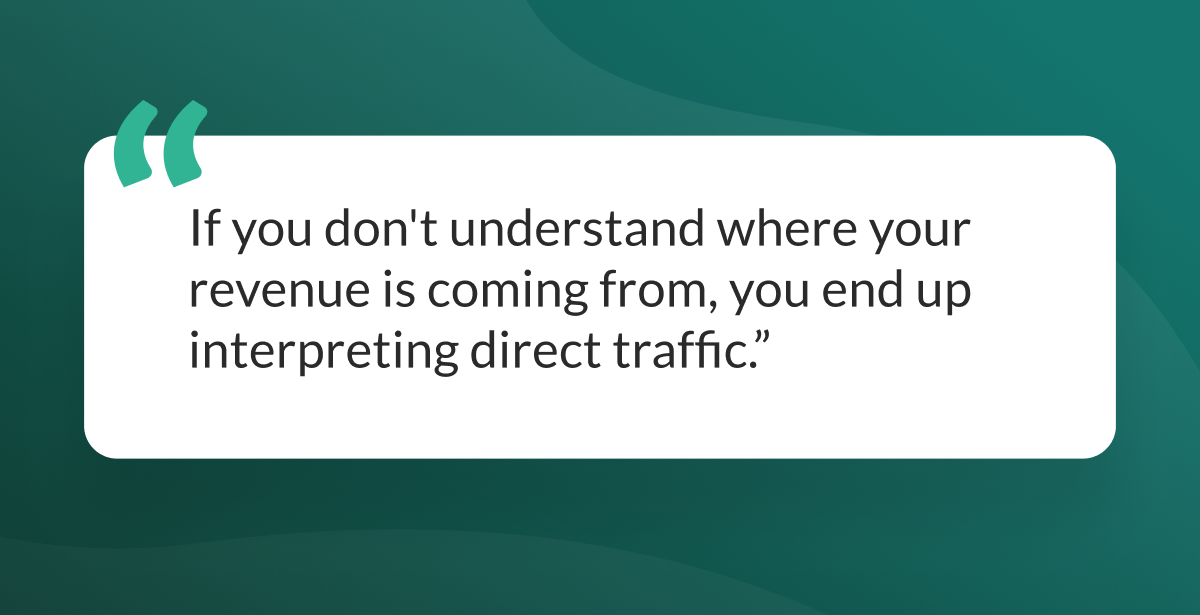
Carl also thinks that talking to the customers you didn’t win is very beneficial. It allows you to understand whether it was your product that was not good enough or didn’t solve their key problems, or maybe it was their purchase experience, or something else. What did your competitor offer to them that was better?
“Obsessing about deal attribution is very important, I think. Otherwise, professionals like us wouldn’t be able to maximize our output when we have strategic discussions,” thinks Carl, stressing that playing the guessing game never works.
Base your actions on data to create a repeatable sales and marketing motion.
Get creative about doing more with less
Both Carl and Fredrik think that organizations should be more creative with their money today.
According to Fredrik, it’s easy to hide behind a big marketing budget. While you generate a lot of buzz or leads, you can still be inefficient in terms of revenue growth. But having a small budget is actually a good way to spark creativity.
When you have less to spend, you are forced to look for less costly yet effective ways to generate demand. For example, instead of hiring external agencies to make a customer testimonial video, you can reach out to a customer yourself and ask a few questions, or send a short survey, or invite them to a podcast, and use this material for content – all free of charge.
Or you can partner with somebody and share the costs. Create joint activities or events. Go to places where your customers go. Send your best people to smaller events. And many more creative ways to promote your brand without emptying your pockets.
Re-evaluating your ICP
To smartly put your money into actions that actually create more with less, you must re-evaluate your ICP.
Really narrowing down your ICP is paramount today! Once you find a very concrete target audience – these are the prospects that are mostly likely to convert into paying customers and stay.
Fredrik puts it this way: “ICP isn't just any customer who would benefit from your product or service. It has to be the creme de la creme of your customers.”
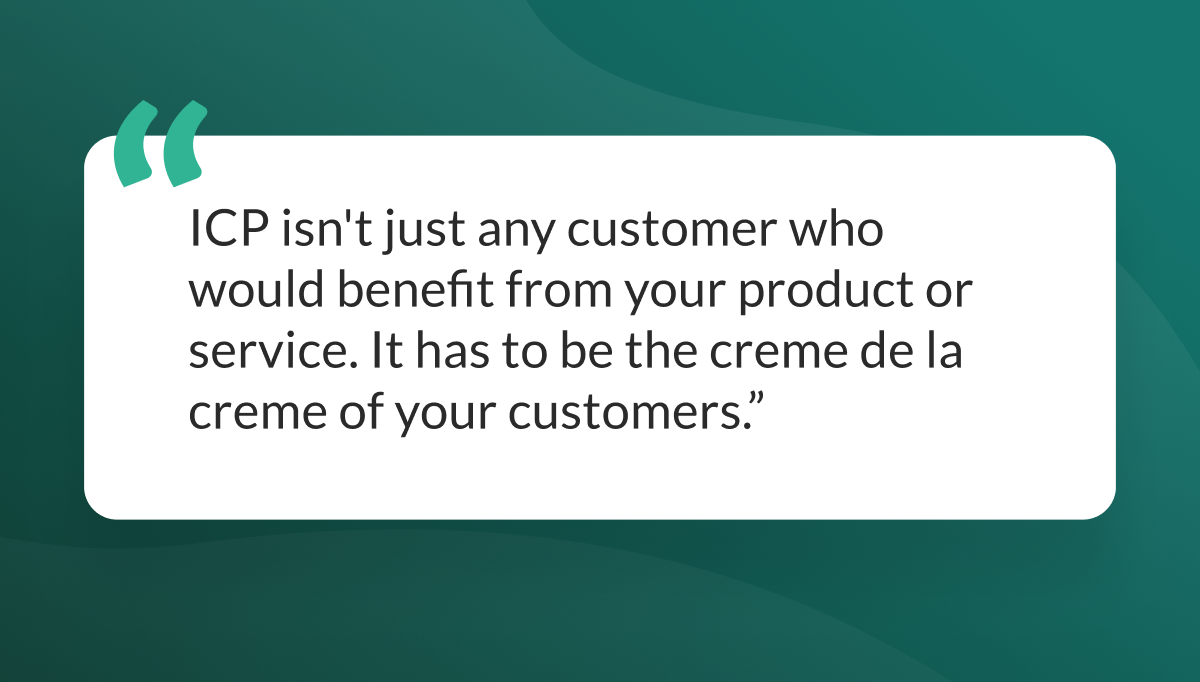
“For example, there is a huge difference between serving a Fortune 500 company or a startup. None of them are ICP for us, but we could still sell to them. It’s important to understand that we can’t build features for these two very different markets with different needs.”
But that’s not all. You need to get down to the nitty-gritty of ICP differentiation. The more specific you’re, the better. You can’t just end your narrowing at the company size, geography and industry type.
When we sell SuperOffice CRM, we need to consider what software platforms and tech ecosystems our potential customers use, how tech-savvy they are, what vendors they work with – this means that the technographic criteria are paramount for our ICP.
Fredrik continues: “But it doesn’t stop there. We also need to be very clear on what business problem we are solving for them. To define the ICP means to take your total addressable market and then to narrow it down to only those who would really benefit and grow with your help.”
Learning from mistakes
If you’re a sales or marketing leader, admitting your mistakes is not only healthy, it’s a must, as otherwise you won’t learn. Here are a few mistakes that the two leaders admitted to have done.
Sales mistakes
Carl confesses that one of the most important things he’s learned was to trust his gut feelings and hit the off-switch once you realize you don’t believe in something, and do that quicker. Don’t just carry-on doing things regardless.
Another mistake was participation in events. “If you're sending five of your best salespeople to an event that flops, you actually waste their time worth of three or four days. That time could have been spent on talking to the high value customers instead,” recollects Carl.
“For me the biggest mistake is not just the wrong investment in dollars. It's the wrong investment in time. It was a mistake that I made at the beginning: I valued dollars more than people’s time.”
Marketing mistakes
When it comes to marketing confessions, Fredrik admits a few of his own mistakes.
“Running campaigns or activities with external agencies, when both you and the agency do not truly understand the customer or the product. It's like the blind leading the blind.
“Sometimes you want to just outsource a problem. But if you don't truly understand who you're targeting, what messaging truly resonates with the audience, it will just be a painful experience with lots of conflicting opinions and missed expectations.”
Fredrik argues that we need to go back to basics, to do the groundwork. And it should be done, first or foremost, internally before you even think about outsourcing something.
Fredrik and Carl, of course, touched upon and gave examples of many more subjects, such as:
- The importance of sales enablement and education inside an organization
- ICP vs. HVC – who generates more revenue
- Average deal size, sales velocity, sales cycles
- How to find creative solutions inside your organization
- How to engage with your customer base and create content that works
Watch the video recording of the webinar and benefit from a wealth of examples, true personal stories and see how the two leaders bounce ideas off each other.
